The NBA salary cap is somewhat malleable, with various exceptions allowing each team to surpass the $154,647,000 threshold once its cap room is used up. In some cases, teams blow past not only the cap limit, but the luxury tax line of $187,895,000 as well — the Cavaliers, Celtics, and Timberwolves are among the clubs who project to have substantial tax bills this season as a result of their spending.
The NBA doesn’t have a “hard cap” by default, which allows clubs like Cleveland, Boston, and Minnesota to build a significant payroll without violating NBA rules. However, there are certain scenarios in which teams can be hard-capped.
The league’s new Collective Bargaining Agreement has carried over the hard cap rules from the 2017 CBA while also expanding them, adding new scenarios in which teams can face hard caps and creating a second salary level that certain teams can’t exceed.
We go into greater detail in a separate article on how teams become hard-capped, but here’s a brief rundown of the ways it can happen in 2025/26:
- A team becomes hard-capped at the first tax apron ($195,945,000) if it makes any of the following moves:
- Acquires a player via sign-and-trade.
- Uses more than the taxpayer portion (up to two years, with a starting salary of $5,685,000) of the mid-level exception to sign a player.
- Uses any portion of the mid-level exception to acquire a player via trade or waiver claim.
- Uses any portion of the bi-annual exception to sign a player or to acquire a player via trade or waiver claim.
- Uses the expanded traded player exception.
- Uses a traded player exception generated during the previous offseason or regular season.
- Signs a player who was waived during the regular season and whose pre-waiver salary was higher than the non-taxpayer mid-level exception ($14,104,000).
- A team becomes hard-capped at the second tax apron ($207,824,000) if it makes any of the following moves:
- Uses any portion of the mid-level exception to sign a player to a contract.
- Aggregates two or more players in a trade for salary-matching purposes.
- Sends out cash in a trade.
- Sends out a player via sign-and-trade and uses that player’s outgoing salary to take back a contract (either in the same transaction or in a subsequent transaction via the resulting trade exception).
Given how many ways there are to create a hard cap, most clubs who don’t intend to operate over one of the two aprons will likely end up hard-capping themselves at one or the other.
Some teams will have to be hyper-aware of that hard cap when they consider any roster move for the rest of the season, but for others it’s just a technicality that won’t affect their plans in any meaningful way.
Listed below are the hard-capped teams for the 2025/26 league year, along with how they created a hard cap.
In some instances, a team made multiple roster moves that would have imposed a hard cap (e.g. acquired a player via sign-and-trade and used the non-taxpayer mid-level exception). Only the first of those transactions is noted below, though in some cases a team made two moves within a single transaction to create a hard cap, in which case each relevant move is mentioned.
Hard-capped at first tax apron
These teams will be prohibited from exceeding $195,945,000 in team salary.
Atlanta Hawks
- Acquired Nickeil Alexander-Walker via sign-and-trade.
- Used a trade exception generated last offseason (for Dejounte Murray) to acquire Alexander-Walker.
Charlotte Hornets
- Used expanded traded player exception to acquire Collin Sexton.
Chicago Bulls
- Used a trade exception generated last season (for Zach LaVine) to acquire Isaac Okoro.
Detroit Pistons
- Acquired Duncan Robinson via sign-and-trade.
Houston Rockets
- Acquired Clint Capela via sign-and-trade.
- Used expanded traded player exception to acquire Capela and Kevin Durant.
Indiana Pacers
- Used a trade exception generated last season (for James Wiseman) to acquire Jay Huff.
Los Angeles Clippers
- Used the non-taxpayer mid-level exception to sign Brook Lopez.
Los Angeles Lakers
- Used the non-taxpayer mid-level exception to sign Jake LaRavia.
Memphis Grizzlies
- Used expanded traded player exception to acquire Kentavious Caldwell-Pope and Cole Anthony.
Miami Heat
- Used expanded traded player exception to acquire Norman Powell.
New Orleans Pelicans
- Used expanded traded player exception to acquire Jordan Poole and Saddiq Bey.
Orlando Magic
- Used the non-taxpayer mid-level exception to sign Tyus Jones.
Portland Trail Blazers
- Used expanded traded player exception to acquire Jrue Holiday.
Sacramento Kings
- Acquired Dennis Schröder via sign-and-trade.
- Used a trade exception generated last season (for Kevin Huerter) to acquire Schröder.
San Antonio Spurs
- Used the non-taxpayer mid-level exception to sign Luke Kornet.
Utah Jazz
- Used the non-taxpayer mid-level exception to acquire Kyle Anderson.
- Used the bi-annual exception to acquire Kevin Love.
Washington Wizards
- Used expanded traded player exception to acquire CJ McCollum, Kelly Olynyk, and Cam Whitmore.
Hard-capped at second tax apron
These teams will be prohibited from exceeding $207,824,000 in team salary.
Brooklyn Nets
- Sent out cash in a trade.
Dallas Mavericks
- Used the taxpayer mid-level exception to sign D’Angelo Russell.
Golden State Warriors
- Used the taxpayer mid-level exception to sign Al Horford.
New York Knicks
- Used the taxpayer mid-level exception to sign Guerschon Yabusele.
No hard cap
- Boston Celtics
- Cleveland Cavaliers
- Denver Nuggets
- Milwaukee Bucks
- Minnesota Timberwolves
- Oklahoma City Thunder
- Philadelphia 76ers
- Phoenix Suns
- Toronto Raptors
This list, which figures to continue evolving, will be updated throughout the 2025/26 league year as necessary. It can be found anytime in the “Hoops Rumors Features” menu on the right-hand sidebar of our desktop site, or in the “Features” menu on our mobile site.
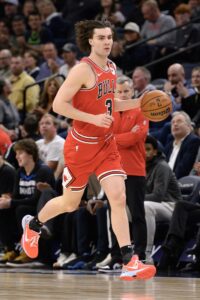
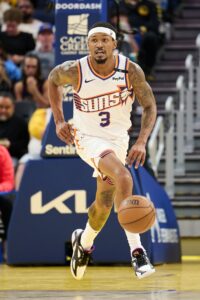
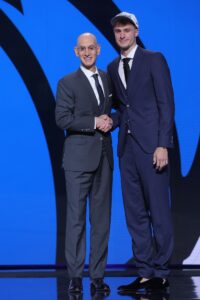 For first-round picks, rookie contracts are fairly rigid, having essentially been predetermined. The NBA’s rookie-scale structure dictates that first-rounders will be signed to four-year deals, which include two guaranteed years, then team options in years three and four.
For first-round picks, rookie contracts are fairly rigid, having essentially been predetermined. The NBA’s rookie-scale structure dictates that first-rounders will be signed to four-year deals, which include two guaranteed years, then team options in years three and four.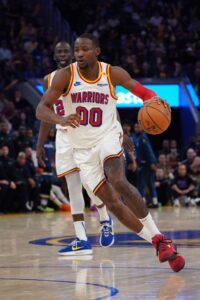
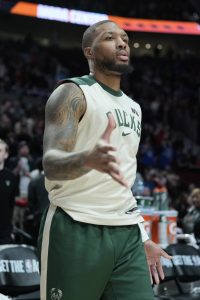 It’s worth noting there’s one big name who was not on our pre-free-agency top 50 because he has only become available since then:
It’s worth noting there’s one big name who was not on our pre-free-agency top 50 because he has only become available since then: 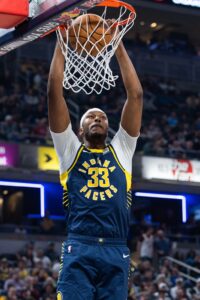 But the main event for the Bucks was reaching a four-year, $107MM
But the main event for the Bucks was reaching a four-year, $107MM 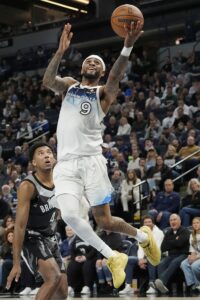
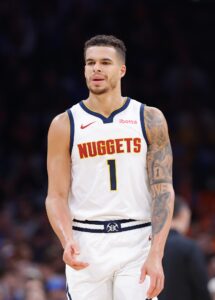 Nuggets
Nuggets